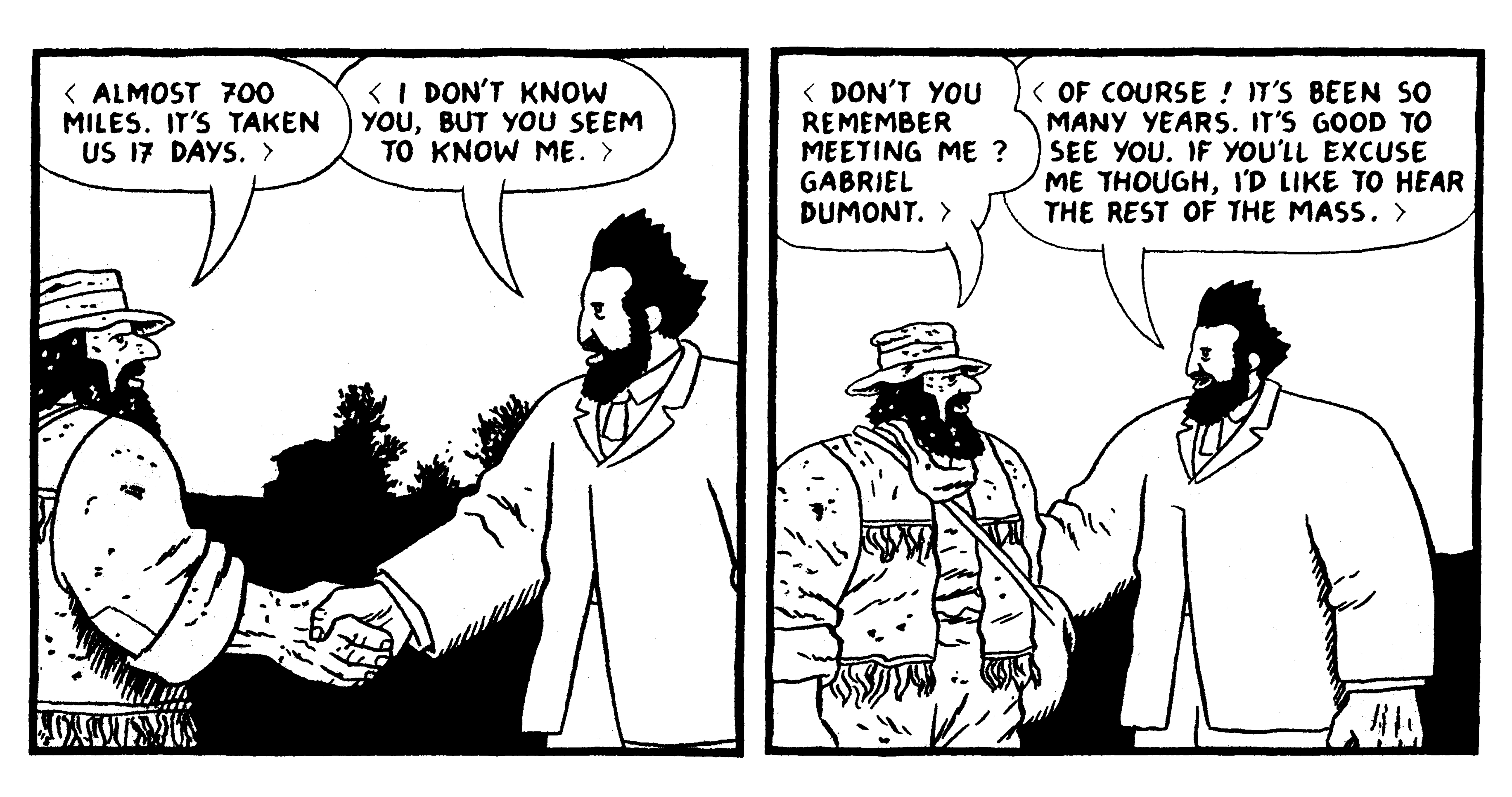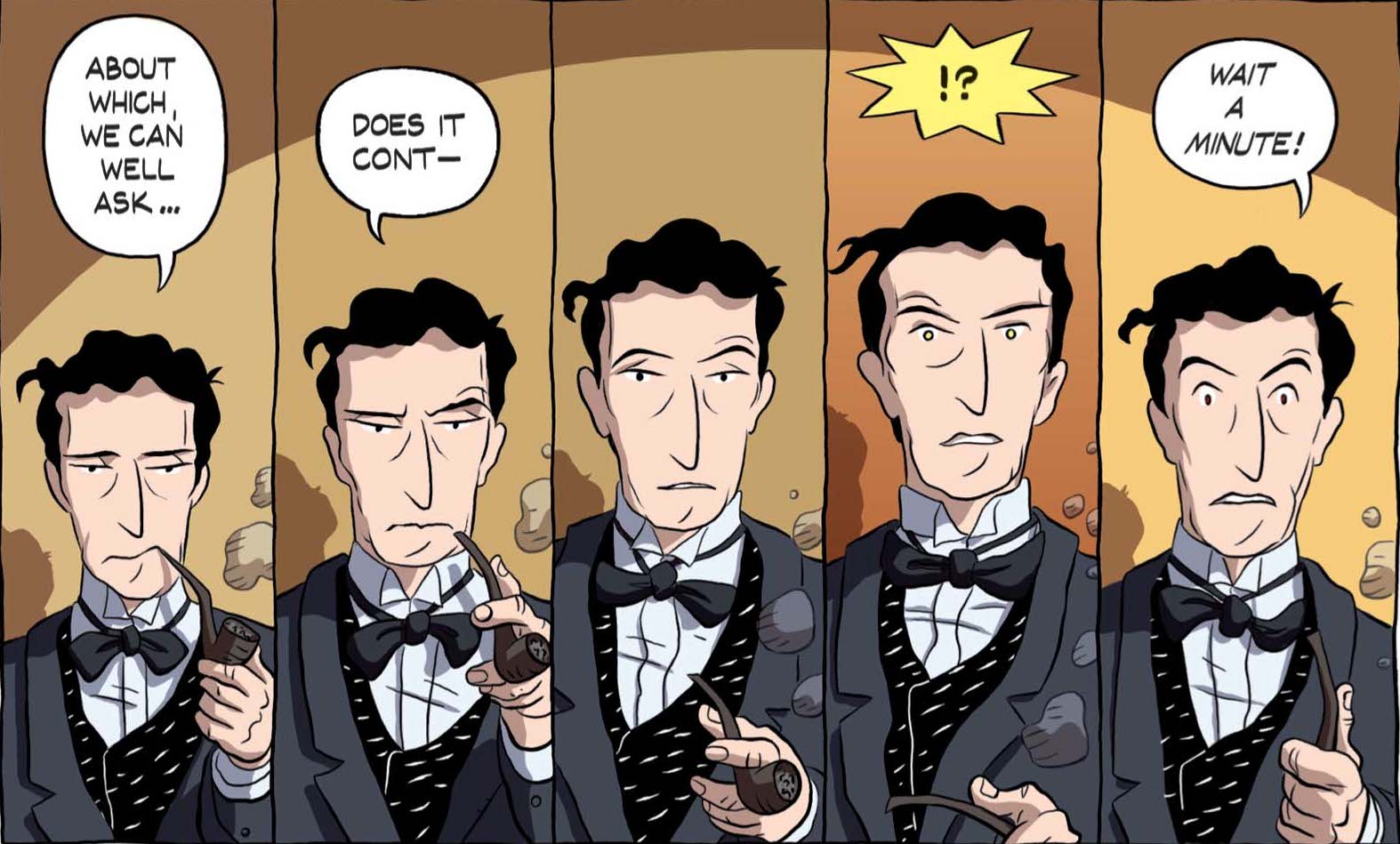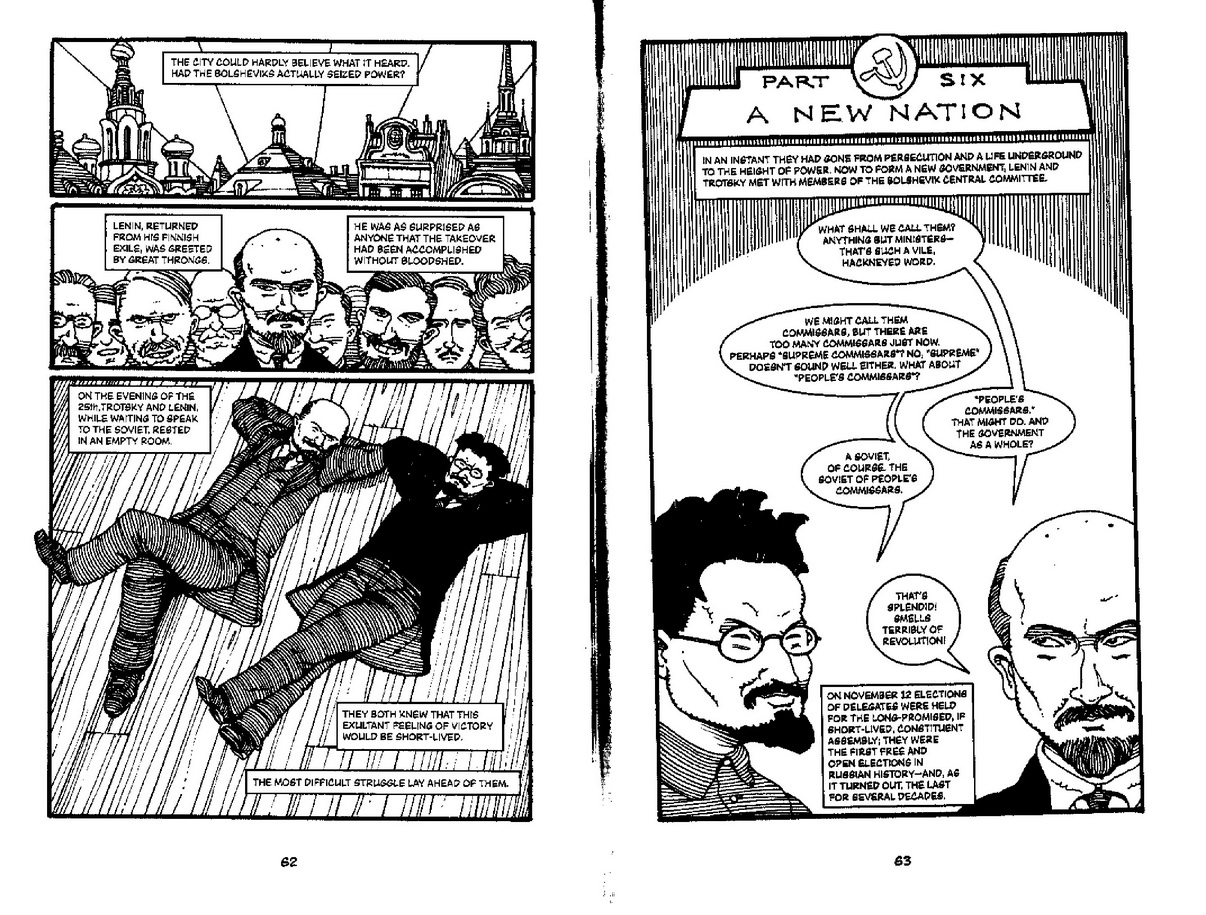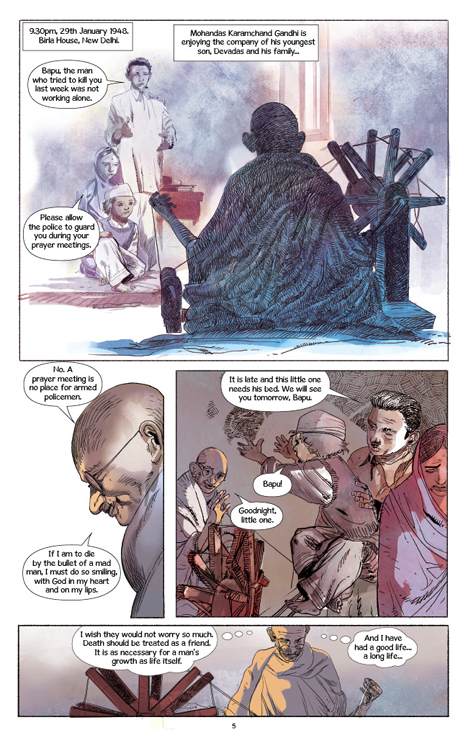Growing up in the 1990s, a significant chunk of my time as a child was devoted to Amar Chitra Katha comics, especially their biographical series. I now realise that these beloved childhood relics were, in some cases, hagiographies. In others, they were representative of the Hindutva brand of politics. But at the time, they were simply hours and hours of binge-reading.
ACK, with its talented pool of artists, whittled a story down to its essence, capturing historical moments with admirable ease. Comics are, without doubt, an extremely efficient way of summarising a lifetime. Here are five biographical comics that are well worth your time and money, in no particular order of preference (for the purposes of this article, autobiographies are not included).
Louis Riel (2003), Chester Brown

This book should be required reading for comics practitioners as well as fans, simply for the way it balances scholarly precision (it’s a rare graphic novel that boasts of a full bibliography, appendices and extensive endnotes) and cinematic verve. Chester Brown is a Canadian artist whose work (most recently, the incendiary memoir Paying for It) takes some time to warm up to: his style isn’t extravagant and doesn’t really leap off the page.
But persist for a dozen pages or so and you’ll realise the subtlety of his art; his exceptional paneling sense in particular. Riel, the subject of this book, was a 19th century separatist leader of the Métis people (native to the Canadian prairies) who was eventually executed by the newly formed Canadian government in 1885.
Houdini: The Handcuff King (2007), Jason Lutes and Nick Bertozzi (illustrator)

It’s difficult to imagine a more fascinating biographical subject than Harry Houdini, the most famous escape artist of all time. Houdini’s story has already inspired several films, songs and books, most notably the Pulitzer-winning novel The Adventures of Kavalier and Clay.
This graphic novel does well to cover all the major checkpoints: the young Houdini’s struggles with immigration and anti-Semitism, the first, hesitant shows with handcuffs, the confident later-career skewering of fake mediums and clairvoyants and of course, the final, tragic chapter of his life. The book is written by Lutes, one of the modern-day comics greats, known for his epic ongoing series Berlin. But surprisingly, he did not contribute to the art here: that job went to Nick Bertozzi, who maintains a nice balance between showboating caricature and gritty realism.
Logicomix (2009), Apostolos Doxiadis, Christos H. Papadimitriou, Alecos Papadatos (illustrator) and Annie Di Donna (illustrator)

Logicomix may very well be the most unique comics collaboration of all time: it took a writer (Doxiadis), an illustrator (Papadatos), an animator (Di Donna) and a computer science professor (Papadimitriou) to pull off this singular storytelling feat. Papadimitriou was brought on board because the story being told was that of philosopher-mathematician Bertrand Russell and his monomaniacal quest to formulate a logically airtight “foundation” theorem that would unify all of mathematics.
Russell worked like a fiend and had eccentricities by the dozen; the book presents a faithful picture of what this did to his personal life. The story also boasts of a dazzling support cast, chock-full of geniuses whom Russell sought out during the course of his work: Gottlob Frege, David Hilbert, Kurt Gödel and of course, Ludwig Wittgenstein, the Austrian prodigy whom Russell took under his wing.
Trotsky: A Graphic Biography (2009), Rick Geary

Leon Trotsky, one of the seven members of the original Bolshevik Politburo, was one of the most influential men of the 20th century. His ideas on Marxism were a direct rebuttal to Stalin’s policies and ultimately, Stalin decided that he was too dangerous to live and had him assassinated by Soviet agent Ramon Mercader.
Trotsky’s eventful life, which included a brief, tempestuous affair with iconic artist Frida Kahlo (the companion of his once-comrade Diego Rivera), has been captured beautifully by artist Rick Geary. This book is part of a very enjoyable series of graphic biographies: you would be well-advised to pick up the other titles on the roster as well; Abraham Lincoln, J. Edgar Hoover, Amelia Earhart and many others.
Gandhi (2013), Jason Quinn and Sachin Nagar (illustrator)

The only Indian title on this list, Gandhi is a throwback of sorts: its colour scheme and illustration style reminds you of NBT (Nehru Book Trust) children’s books of the 1990s, with their dreamy watercolours and their sharp, clean outlines. For me, the most impressive achievement of Gandhi is the way it handles the Mahatma’s childhood: his failures, his immaturity and his sometimes over-the-top piousness are shown for what they are. And yet, the book remains deeply reverential of the man and also throws in some wry humour for good measure: an encounter with King George V is especially well done.
Gandhi may not have as many memorable one-liners as some of the other books on this list, but its quiet, understated style grows on you. The fact that it is gorgeously produced and priced competitively (Rs 399 is not a lot by graphic novel standards) doesn’t hurt either.
ACK, with its talented pool of artists, whittled a story down to its essence, capturing historical moments with admirable ease. Comics are, without doubt, an extremely efficient way of summarising a lifetime. Here are five biographical comics that are well worth your time and money, in no particular order of preference (for the purposes of this article, autobiographies are not included).
Louis Riel (2003), Chester Brown

This book should be required reading for comics practitioners as well as fans, simply for the way it balances scholarly precision (it’s a rare graphic novel that boasts of a full bibliography, appendices and extensive endnotes) and cinematic verve. Chester Brown is a Canadian artist whose work (most recently, the incendiary memoir Paying for It) takes some time to warm up to: his style isn’t extravagant and doesn’t really leap off the page.
But persist for a dozen pages or so and you’ll realise the subtlety of his art; his exceptional paneling sense in particular. Riel, the subject of this book, was a 19th century separatist leader of the Métis people (native to the Canadian prairies) who was eventually executed by the newly formed Canadian government in 1885.
Houdini: The Handcuff King (2007), Jason Lutes and Nick Bertozzi (illustrator)

It’s difficult to imagine a more fascinating biographical subject than Harry Houdini, the most famous escape artist of all time. Houdini’s story has already inspired several films, songs and books, most notably the Pulitzer-winning novel The Adventures of Kavalier and Clay.
This graphic novel does well to cover all the major checkpoints: the young Houdini’s struggles with immigration and anti-Semitism, the first, hesitant shows with handcuffs, the confident later-career skewering of fake mediums and clairvoyants and of course, the final, tragic chapter of his life. The book is written by Lutes, one of the modern-day comics greats, known for his epic ongoing series Berlin. But surprisingly, he did not contribute to the art here: that job went to Nick Bertozzi, who maintains a nice balance between showboating caricature and gritty realism.
Logicomix (2009), Apostolos Doxiadis, Christos H. Papadimitriou, Alecos Papadatos (illustrator) and Annie Di Donna (illustrator)

Logicomix may very well be the most unique comics collaboration of all time: it took a writer (Doxiadis), an illustrator (Papadatos), an animator (Di Donna) and a computer science professor (Papadimitriou) to pull off this singular storytelling feat. Papadimitriou was brought on board because the story being told was that of philosopher-mathematician Bertrand Russell and his monomaniacal quest to formulate a logically airtight “foundation” theorem that would unify all of mathematics.
Russell worked like a fiend and had eccentricities by the dozen; the book presents a faithful picture of what this did to his personal life. The story also boasts of a dazzling support cast, chock-full of geniuses whom Russell sought out during the course of his work: Gottlob Frege, David Hilbert, Kurt Gödel and of course, Ludwig Wittgenstein, the Austrian prodigy whom Russell took under his wing.
Trotsky: A Graphic Biography (2009), Rick Geary

Leon Trotsky, one of the seven members of the original Bolshevik Politburo, was one of the most influential men of the 20th century. His ideas on Marxism were a direct rebuttal to Stalin’s policies and ultimately, Stalin decided that he was too dangerous to live and had him assassinated by Soviet agent Ramon Mercader.
Trotsky’s eventful life, which included a brief, tempestuous affair with iconic artist Frida Kahlo (the companion of his once-comrade Diego Rivera), has been captured beautifully by artist Rick Geary. This book is part of a very enjoyable series of graphic biographies: you would be well-advised to pick up the other titles on the roster as well; Abraham Lincoln, J. Edgar Hoover, Amelia Earhart and many others.
Gandhi (2013), Jason Quinn and Sachin Nagar (illustrator)

The only Indian title on this list, Gandhi is a throwback of sorts: its colour scheme and illustration style reminds you of NBT (Nehru Book Trust) children’s books of the 1990s, with their dreamy watercolours and their sharp, clean outlines. For me, the most impressive achievement of Gandhi is the way it handles the Mahatma’s childhood: his failures, his immaturity and his sometimes over-the-top piousness are shown for what they are. And yet, the book remains deeply reverential of the man and also throws in some wry humour for good measure: an encounter with King George V is especially well done.
Gandhi may not have as many memorable one-liners as some of the other books on this list, but its quiet, understated style grows on you. The fact that it is gorgeously produced and priced competitively (Rs 399 is not a lot by graphic novel standards) doesn’t hurt either.
Scroll has produced award-winning journalism despite violent threats, falling ad revenues and rising costs. Support our work. Become a member today.

In these volatile times, Scroll remains steadfastly courageous, nuanced and comprehensive. Become a Scroll Member and support our award-winning reportage, commentary and culture writing.
